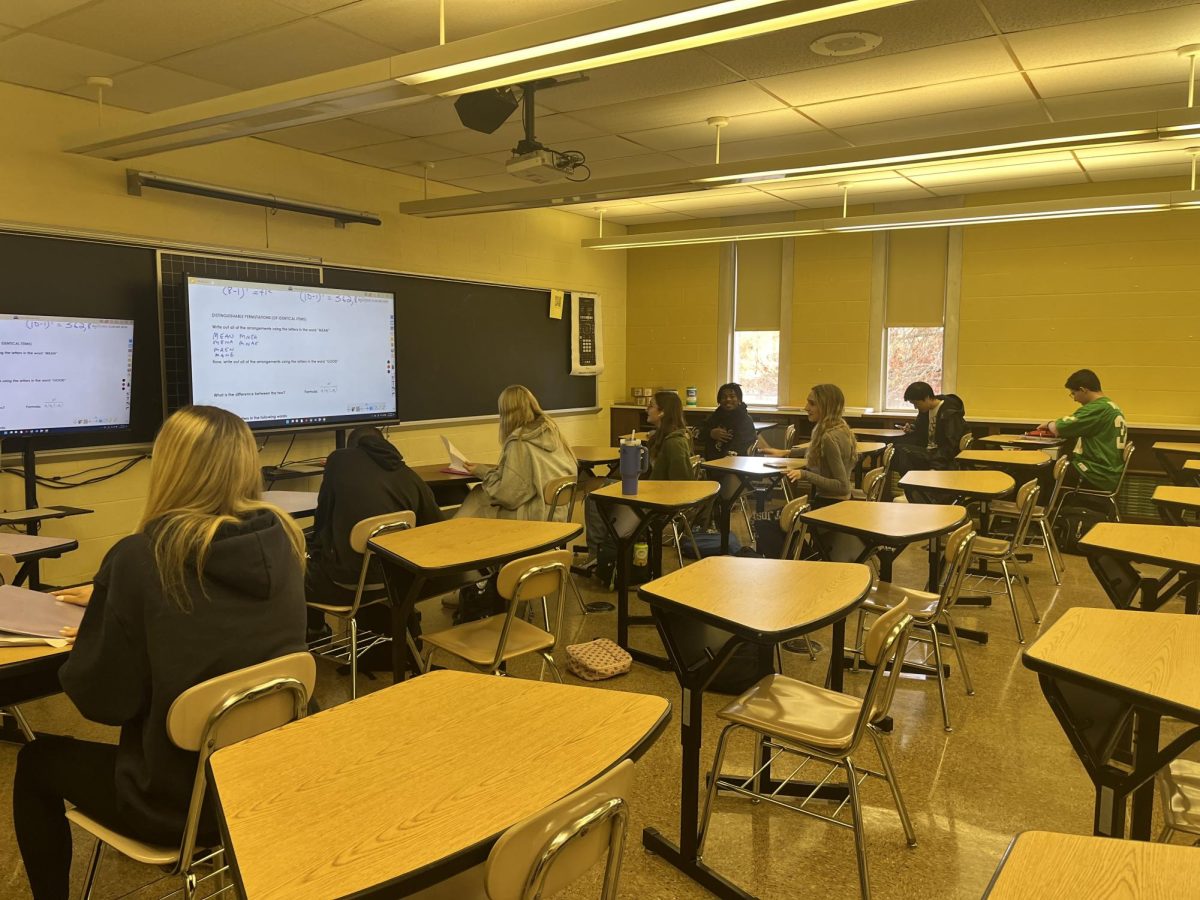Opinions expressed in the Op/Ed section of The Knight Crier are not necessarily reflective of the views of the entire staff of the KC.
When walking into the classroom at North Penn High School, students are normally met with 25 other students, just like them. For some, this is a dream because there are so many people to hide behind, but in the long run of academic success, this large class size negatively affects one’s learning. Because large classes stretch teachers so thin, there is often a lack of personalization and focus resulting in difficulties for many students.
At North Penn High School in particular, there is said to be a 15:1 student-to-teacher ratio, however many classrooms house up to 29 students per period. While this is great from a payroll standpoint, it is a disservice to many students, especially those who are quiet. In a world where short attention spans and social anxiety are frequent, students tend to shy away from putting themself on display in front of 25 of their peers.
If you have a big class and people are confused [the teacher] may not answer your question, or only get to a couple of questions, but if you have a smaller class people feel more comfortable to ask questions
— Emily Butler, NPHS Junior
“If you have a big class and people are confused [the teacher] may not answer your question, or only get to a couple of questions, but if you have a smaller class people feel more comfortable to ask questions,” North Penn junior Emily Butler said. “You are able to understand [content] better and you are able to feel more comfortable talking to a teacher than with a big group.”
Although the high school offers time for extra help, these students may not be inclined to go because they are not super comfortable with their teachers, as they never really had time to create a bond with them. Personalization and comfortability are crucial for many students as they want to be heard, and this is not always the case in classes of large numbers.
Not only is there a lack of connection between students and their teachers in large classes, but also between students and their peers. In smaller classes, there is a sense of intimacy and community that forms between everyone which is not applicable in classes with larger numbers.
“[With smaller classes] you can have more one-on-one time with the teacher and you have better connections with everyone in the class,” Butler continued.
With periods being only 45 minutes long, there is not enough time for a teacher to address all the questions that their students may have. After teaching the curriculum for the day, there is roughly a maximum of 10 minutes left for independent work and questions, depending on one’s style of teaching. This 10-minute time slot leaves nowhere near enough time for even half of the class to ask questions if they have one/are comfortable with asking.
In large classes, teachers usually teach according to the majority of the class. This means that as long as most of their students understand, they move on because there is not enough time to help each individual student. These blanket statements can make learning difficult for those who are not a part of the majority, as they are missing key instructional time that may ease their struggle.
For North Penn junior Gianna Ciccone, a small class was exactly what she needed to understand the content.
The teacher can come over and help me with whatever I’m working with, [and instead of giving] me a general statement for everyone and he is able to get to everyone if everyone has a question.
— Gianna Ciccone - NPHS junior
“Last year I was in a lot of large classes and my grades were a lot lower. This year, most of my classes are smaller; my math class only has 12 people in it, and I learn the best in that [environment],” Ciccone said. “The teacher can come over and help me with whatever I’m working with, [and instead of giving] me a general statement for everyone and he is able to get to everyone if everyone has a question. I can see my grades increase from last year to this year, and I think a lot of that is the smaller class size.”
Not only can smaller classes increase grades, but it also makes the logistics of teaching much easier.
“Large classes present logistical challenges in every way. Even simple tasks like attendance or activities where students share and present take up more time.” North Penn AP English teacher Mrs. Rachel Specht said. “There are more student needs in large classes as well, and it can feel difficult to meet them all while engaging and teaching.”
Although this sounds great on paper, there are many difficulties that interfere with making this a reality. Making classes smaller requires more teachers, which we don’t have at North Penn. Hiring more teachers would require the school district to enlarge its budget for teacher salaries. With more teachers, comes more classrooms, and with the way North Penn is, there is no room for more classrooms.
With all of this being said, the question stands whether it is economically and spaciously possible to make smaller classes at North Penn High School. Even though it would be best for teachers and students, many things need to be done in order for this to be put into place



Willa Magland • Nov 29, 2023 at 9:27 am
This is a great read in combination with Tareq’s article on teacher’s salaries. Things need to change!
I don’t believe I have a single class below 20 students (besides AP German, it’s a fun bunch), so the 15:1 number surprises me. I wonder where they got that number from?